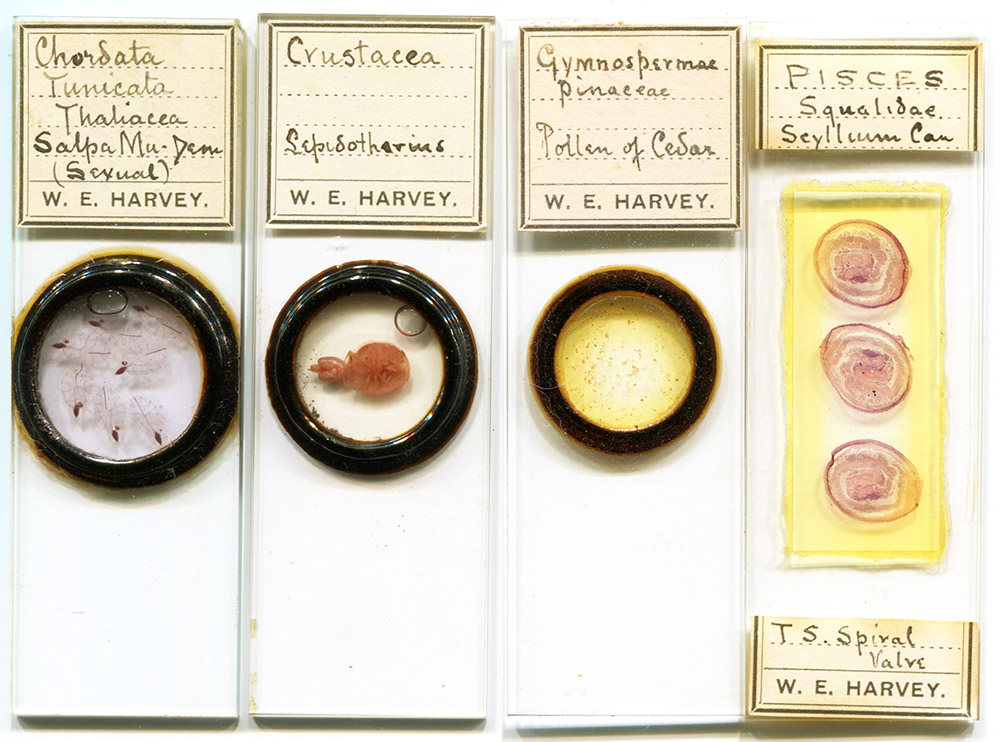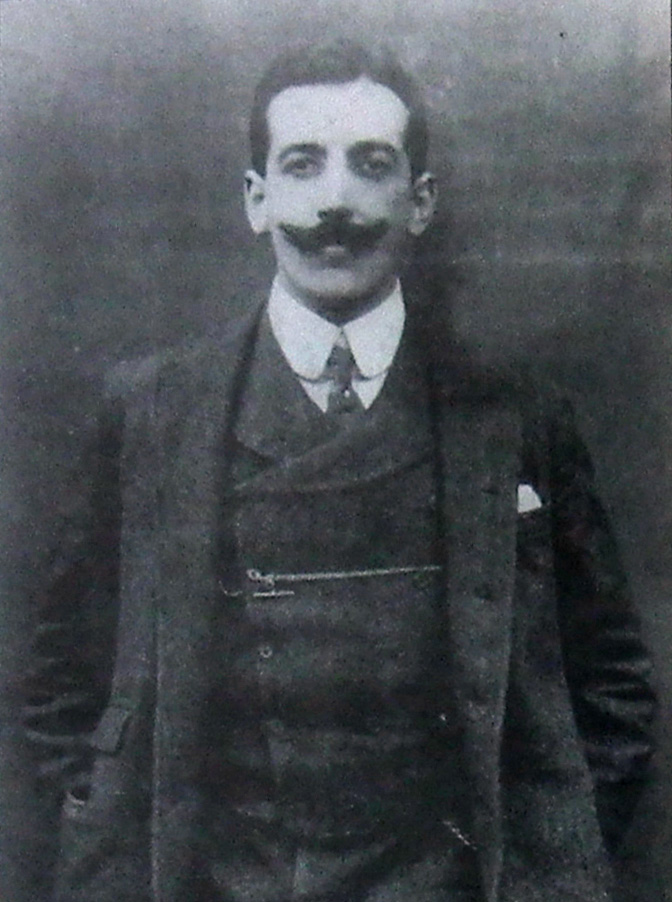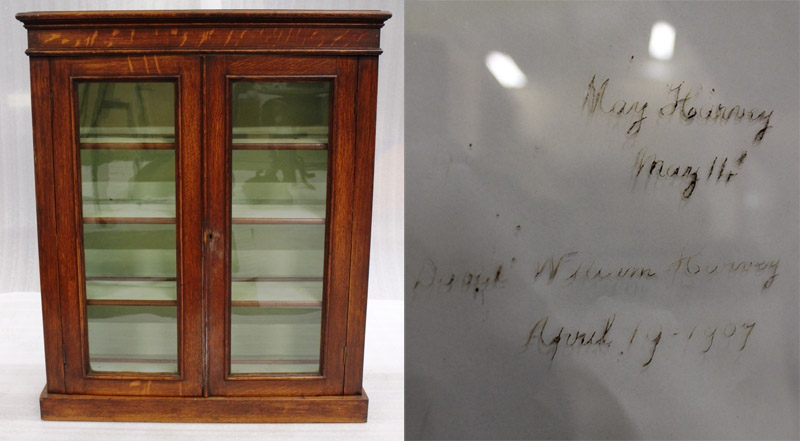
Figure 1. Examples of microscope slides prepared by William E. Harvey.
William Edward Harvey, 1869-1961
by Brian Stevenson and Steve Gill
last updated April, 2014
W.E. Harvey was an amateur microscope slide maker, primarily active during the first decade of the 20th century. His slides are usually of very good quality, with a focus on sea life. There are no known connections between W.E. Harvey and W. Harvey, another amateur microscopist from the same era, and who lived in Constantinople, Turkey and Eastbourne, Sussex.

Figure 1.
Examples of microscope slides prepared by William E. Harvey.

Figure 2.
William Edward Harvey, 1902. Adapted from his ‘Life and Times of a Saxmundham Man’.
As a gift to his family, W.E. Harvey dictated his life’s story to his son, which was then published as a typewritten booklet by the Saxmundham & District Local History Society. His memoirs are a charming story of an average man, and provided much of the following information on Harvey’s life.
William Edward Harvey was born on August 11, 1869, in Saxmundham, Suffolk, England. His father, also named William Edward Harvey, owned a shop which the son described as “a small grocery and large drapery business .. in one room was nothing but boots, next to that was a millinery with ladies’ fur muffs and tippets. There was also a department of men’s hats, also carpets and mats. Heavy drapery, such as sheeting and blankets also hosiery for men, women and children”.
At age nine, Young William began schooling with a local master, which consisted largely of self-education and regular beatings. A note by William’s son in Life and Times of a Saxmundham Man stated, “on the palm of my father’s left hand there is … the scar left by a nail in a slate frame with which he was thrashed”. His educational setting improved in 1881, when he as sent to boarding school at Beccles College. Harvey remarked that 1882 was notable because sciences were introduced to the school curriculum, including electricity, physiology and hygiene.
In early 1882, William’s father filed for bankruptcy. William Sr. and his brothers had been drawn into debt by lending money to their brother James, who had lost some £90,000 through commodity investments. Young William left school in 1884, at the age of 14. The following year, he was sent to work and live at a grocery shop in Hackney, London, then, in 1886, to another on Old Kent Road. For 5 shillings per week, Harvey worked 7:30 AM to 10 PM on Mondays through Thursdays, 7:30 AM to 11 PM on Fridays, and 7:30 AM to midnight on Saturdays. Those hours were reduced in 1887, when the Young Persons Employment Act restricted the work hours of persons under 18 to no more than 74 hours per week. He worked for several other shopkeepers over the next few years, including one for whom he delivered orders around the countryside by dog cart.
He had the good fortune to meet a member of the London Stock Exchange, who offered Harvey a job as a broker’s clerk in London. Harvey moved to a similar job in Birmingham in 1887. He there made a number of friends in the Birmingham Photographic Society. People interested in photography were often involved with other technologies, so it is possible that Harvey was involved with microscopy by that time.
Harvey married Clarissa Murley in 1898. A daughter, Dorothy, was born on April 9, 1899. Clarissa had become “unwell” during the latter stages of the pregnancy. After the birth, she “became steadily more unwell” and “relapsed into a coma”. She died April 16.
Harvey and his infant daughter moved back to London in July, again working with a stock broker. He initially lived in Brixton with his in-laws, but “only after a few weeks my mother-in-law told me she would be glad if I would find another home for my daughter”. He found a boarding home in Dulwich in early 1890.
William married Mary (“May”) Wilkinson in June, 1903. They had a son, David, in 1907.
On October 21, 1904, Harvey was elected to membership in the Quekett Microscopical Society. He then lived at 222, Barcombe Avenue, Streatham Hill, Lambeth. He remained a member of the Quekett through at least 1906. His name is absent from the membership rolls of 1908 onward.
He evidently maintained an active interest in microscopy. These two notes were published in 1908 in the magazine Knowledge. “By the kindness of Mr. W.E. Harvey, of Thornton Heath, I am able this month to offer to such of my readers as care to apply for it, some dogfish skin, cut into 5/8-inch circles ready for mounting. They should be mounted dry and examined by reflected light, and make, as many of my readers know, very beautiful and curious objects. Unfortunately the supply is distinctly limited, so that I can only undertake to supply demands as far as the material goes, and in order of priority of application. Applications must be accompanied by a stamped addressed envelope and by the coupon to be found in the advertisement columns of this issue of ‘Knowledge’”, and “Mr. W.E. Harvey has very kindly sent me for distribution some Foraminiferal gatherings from the English Channel. I shall be pleased to send some of these to any reader who cares to apply. All applications must be accompanied by a stamped addressed envelope, and by the coupon to be found in the advertisement columns of this issue of ‘Knowledge’”.
We have not located any further records of Harvey being involved with microscopy, suggesting that his extant slides probably date from between roughly 1904 and 1908.
Harvey’s 13 year old daughter, Dorothy, became seriously ill in 1912, and died that September. That may have been due to complications from a bout of meningitis she suffered in 1899.
Business practically came to a standstill with the outbreak of World War I. Harvey’s employer’s principal client had been the Deutsche Bank. He joined the Army in 1914, serving in England and Scotland, and attained the rank of Captain.
After the war, Harvey worked for the Ministry of War Pensions, as a claims investigator.
Harvey’s second wife, Mary, died of tuberculosis in 1924, at the age of 49. He married again in 1926, to Cecily Muriel Worral.
The pension inspector job ended in 1929. Harvey then bought a tobacco and confectionery shop in Stockwell. He relocated to a better site in 1936, dealing solely with tobacco. In 1951, he retired to live with his son, David, who was then a railway engineer living in Norwich. William died there in June, 1961.
In addition to his interests in microscopy and, apparently photography, W.E. Harvey was a skilled wood worker. Son David donated several pieces of William’s work to the Norfolk Museum. Some of those items are illustrated below. Additional photographs and information can be found at http://shinealightproject.wordpress.com/2013/06/24/if-you-want-a-golden-rule-that-will-fit-everything-this-is-it-have-nothing-in-your-houses-that-you-do-not-know-to-be-useful-or-believe-to-be-beautiful/

Figure 3.
A cabinet made by W.E. Harvey. He inscribed the
glass with his wife’s name and his son’s birthdate. Adapted from
http://shinealightproject.wordpress.com/2013/06/24/if-you-want-a-golden-rule-that-will-fit-everything-this-is-it-have-nothing-in-your-houses-that-you-do-not-know-to-be-useful-or-believe-to-be-beautiful/

Figure 4.
Two chairs made by W.E. Harvey. Adapted from
http://shinealightproject.wordpress.com/2013/06/24/if-you-want-a-golden-rule-that-will-fit-everything-this-is-it-have-nothing-in-your-houses-that-you-do-not-know-to-be-useful-or-believe-to-be-beautiful/
Acknowledgements
We thank Helen Revell of the Saxmundham & District Local History Society, and the Norfolk Museum for information on the life and works of W.E. Harvey, adapted here for noncommercial, educational purposes.
Resources
England census, birth, marriage and death records, accessed through ancestry.co.uk
Harvey, William Edward and David William Harvey (undated) The Life and Times of a Saxmundham Man, Saxmundham and District Local History Society
Journal of the Quekett Microscopical Club (1904) Minutes of the meeting of October 21, 1904, Vol. 4, page 176
Journal of the Quekett Microscopical Club (1905) List of members for 1905, Vol. 4, page xi
Knowledge (1908) Notes of materials made available by W.E. Harvey, New series, Vol. 5, pages 91 and 269
Woolbright, Dayna (accessed April, 2014) “If you want a golden rule that will fit everything, this is it: Have nothing in your houses that you do not know to be useful or believe to be beautiful”, a Norfolk Museums Shine a Light Project, http://shinealightproject.wordpress.com/2013/06/24/if-you-want-a-golden-rule-that-will-fit-everything-this-is-it-have-nothing-in-your-houses-that-you-do-not-know-to-be-useful-or-believe-to-be-beautiful/